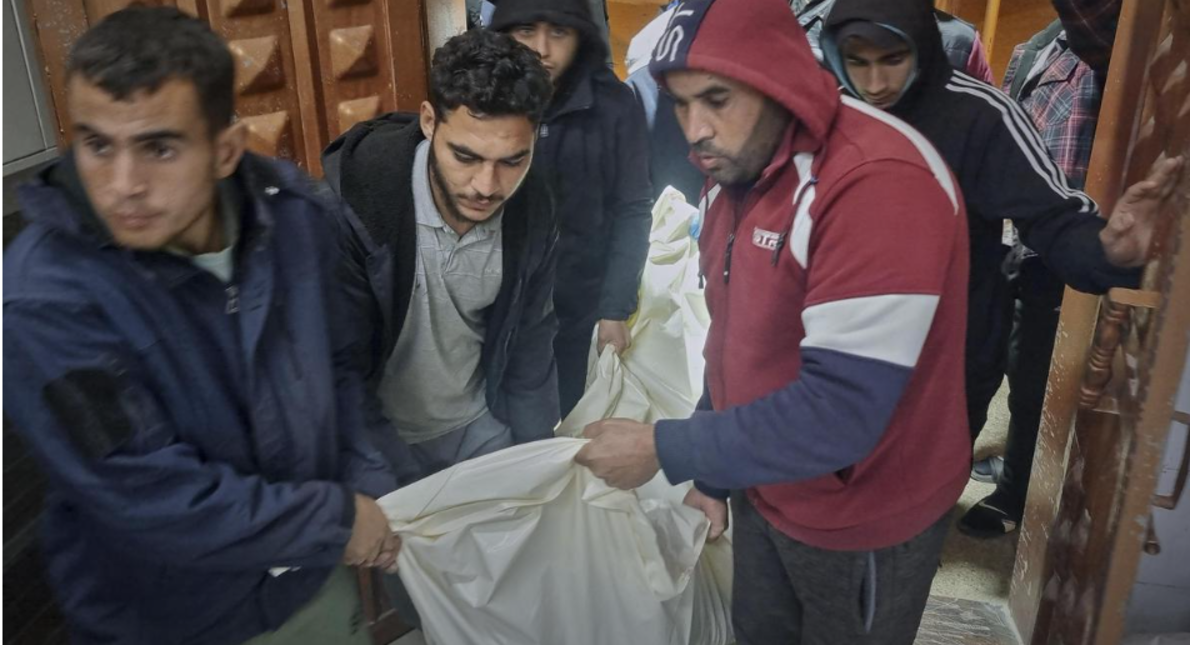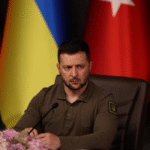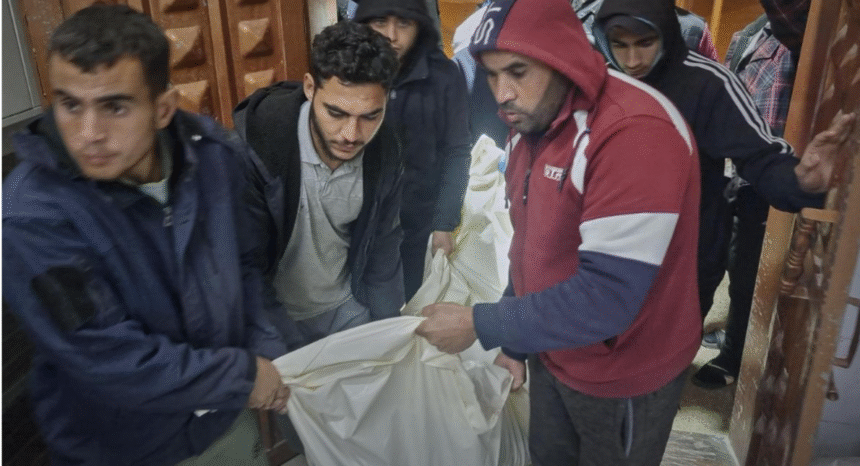1. Introduction
Israel Hands Over Bodies In a new development within the strained cease-fire framework between Gaza Strip and Israel, Israeli authorities have handed over the bodies of 30 Palestinians to Gaza hospital officials. This handover occurs one day after Palestinian militants in Gaza transferred the remains of two Israeli hostages to Israel’s authorities
The exchange is part of a broader and fragile agreement intended to address some of the most agonising human-dimensions of the war: the recovery of the dead, the identification of bodies, and the repatriation of remains. Yet, despite the seeming progress, the underlying humanitarian crisis, heavy death tolls and unresolved issues continue to cast a long shadow.
2. What Has Happened: The Bodies, The Hand-Over, The Context
2.1 The hand-over of Palestinian bodies
Hospital officials at Nasser Hospital in Khan Younis, southern Gaza, confirmed receipt of 30 bodies from Israeli authorities. These remains arrived via the International Committee of the Red Cross (ICRC) which facilitated the transfer.
According to officials, all the bodies were unidentified at the time of transfer — meaning the hospital and Gaza’s Health Ministry lacked confirmed names, precise causes of death or full documentation for each.
The transfer brings the total number of Palestinian bodies returned by Israel under this framework to at least 225, according to Gaza’s Health Ministry.  FORE MORE INFORMATION
FORE MORE INFORMATION
2.2 The related return of Israeli hostage remains
A day prior, Palestinian militants handed over the remains of two Israeli hostages — identified by Israeli officials as Sahar Baruch (25) and Amiram Cooper (84) — both taken hostage during the October 7 2023 attack by Hamas.
These returns form part of a ceasefire deal wherein hostages (and remains) are exchanged for the return of Palestinian bodies held by Israel. The cycle of exchange is thus in motion, albeit slowly and with many outstanding issues.
2.3 The broader context
-
The war that erupted after October 7 2023 has devastated Gaza, with Gaza’s Health Ministry reporting more than 68,600 Palestinians killed. (Israel disputes this figure.)
-
The hostage-and-bodies exchange scheme was brokered amid the cease-fire situation, with external mediators involved.
-
The return of bodies is deeply significant: for families awaiting closure, for forensic investigation, for humanitarian standards — yet it also spotlights how many remain missing.
3. The Human and Forensic Dimension
3.1 Identification—or lack thereof
A major challenge is the identification of bodies. At Nasser Hospital, health officials say many bodies arrive without ID, documentation or DNA verification kits. One pediatric doctor said: “All the bodies … arrived without identification details.”
Families in Gaza face heart-wrenching uncertainty — viewing photographs, Israel Hands Over Bodies visiting morgues, but often unable to confirm whether the returned body is their missing loved one.
3.2 Cause of death and condition of remains
Reports from Gaza indicate that some returned bodies show signs of gun-shot wounds, Israel Hands Over Bodies restraints or other injuries. Some bodies arrived with hand-cuffs, bullet wounds, or severe trauma.
However, Israel Hands Over Bodies the exact circumstances of death (combatant vs civilian, killed in Israel vs died in custody vs died in Gaza) remain largely unclear. The Israeli side has provided limited detail; Gaza officials have flagged concerns about transparency.
3.3 The emotional and moral weight
For the families on both sides, the return of remains embodies immense emotional weight: closure, Israel Hands Over Bodies mourning, acknowledgement of loss. Yet the process also underscores unresolved grief: missing persons, unknown fates, unreturned remains, shattered infrastructure.
4. The Diplomatic and Cease-Fire Mechanics
4.1 Exchange framework
Under the cease-fire deal, Israel Hands Over Bodies a reciprocal model is operating: for every body of a deceased Israeli hostage returned, a corresponding number of Palestinian bodies are to be returned to Gaza. For example, some reports note a ratio of 15 Palestinian dead for every Israeli body returned.
This framework attempts to provide a mechanism of incentive and trust. The turn of 30 Palestinian bodies corresponds with the Israeli side receiving two Israeli remains a day earlier.
4.2 Challenges to the mechanism
-
Verification: Each side disputes aspects of numbers, identities and transparency.
-
Delays: Many remains remain unreturned — hostages’ bodies and Palestinian dead alike.
-
Continued violence: Even amid the exchange, Israeli strikes continue in Gaza, threatening the truce’s stability.
-
Humanitarian logistics: The transfer of remains crosses intense logistical, security and identification hurdles.
4.3 Significance and pressure points
-
The hand-over signals that even in war and stalemate, frameworks of humanitarian exchange can function.
-
The returns also place pressure on both sides: Israel to continue returning Palestinian bodies, and Hamas/Palestinian militants to return all hostage remains.
-
International mediators (including U.S., Egypt, Qatar) view such exchanges as critical to maintaining momentum for broader de-escalation.
5. Why This Matter: Humanitarian, Legal and Strategic Implications
5.1 Humanitarian dimension
-
The recovery and return of bodies is a basic humanitarian principle: dignity in death, mourning for families, clarity of fate for missing persons.
-
For Gaza’s health system, overwhelmed and under-resourced, the arrival of bodies adds strain—particularly given the difficulties of forensic identification.
-
The process also intersects with civilian suffering: many of the dead are from civilian populations and combatants, Israel Hands Over Bodies and their return raises questions about wartime conduct.
5.2 Legal and ethical dimension
-
International humanitarian law (IHL) demands respect for the dead, proper handling of remains, and for parties to hostilities to facilitate returns whenever possible.
-
The condition of some returned bodies (blindfolds, restraints) raises serious concerns about possible violations: torture, extrajudicial killing, Israel Hands Over Bodies mistreatment in custody. Gaza officials and human-rights monitors have flagged these issues.
-
Transparent identification, cause of death, and accountability remain weak, undermining long-term justice and reconciliation.
5.3 Strategic and political dimension
-
For Israel and Hamas/Gaza, these exchanges serve as tactical gestures within a larger war. They can relieve domestic pressure, Israel Hands Over Bodies signal willingness to comply, and maintain cease-fire credibility.
-
Yet they also expose the vulnerabilities: missing hostages, missing Palestinian dead, incomplete exchanges, continuing violence.
-
The returns are not a cessation of war — but may enable limited humanitarian relief and pave the way for further negotiations.
6. Obstacles, Outstanding Issues and Risks Ahead
6.1 Thousands still unaccounted
Even with hundreds of bodies returned, Israel Hands Over Bodies large numbers remain missing on both sides. Families continue to wait, their fate unknown. The lack of comprehensive lists, the destruction of forensic infrastructure, and the huge scale of death complicate recovery.
6.2 Fragile cease-fire
The fact of the hand-over did not stop Israeli strikes in Gaza this week, Israel Hands Over Bodies which killed more than 100 Palestinians according to Gaza health officials. The ongoing operations underscore that the exchange is in a war-zone, not a stable peace environment.
6.3 Identification and forensic gaps
Gaza lacks adequate DNA testing, forensic capacity, and institutional support to identify remains. This means many bodies may be buried as “unknown,” leaving families in limbo.
6.4 Accountability and transparency
While the return of remains is crucial, Israel Hands Over Bodies it does not replace the need for investigations: how did these individuals die? Were rules of war respected? Without transparency, the cycle of grievance continues.
6.5 Humanitarian burden
The death toll, the destruction of infrastructure, Israel Hands Over Bodies displaced populations, and ongoing blockade/humanitarian constraints mean the environment for recovering remains and enabling dignified burial is extremely difficult.
7. Voices and Reactions
-
Gaza hospital officials expressed both relief and frustration: relief that the bodies arrived, Israel Hands Over Bodies frustration at the lack of identification data.
-
Families waiting for missing loved ones voiced anguish: some say they view photos of body-bags hoping for a positive identification but fear the unknown.
-
Israeli officials welcomed the return of the two Israeli bodies, Israel Hands Over Bodies but stressed that “the job is not done” until all hostages’ remains are returned.
-
Human-rights organisations note that while exchanges are welcome, they should not distract from broader issues of civilian protection, accountability and investigation of wartime conduct.
 FORE MORE INFORMATION
FORE MORE INFORMATION
8. What To Watch Going Forward
-
Will the return of these 30 bodies accelerate further exchanges — particularly the remaining hostages’ remains held by Gaza militants?
-
Will Israel continue to release Palestinian body-remains at the agreed ratio, and will identification be improved with forensic support?
-
Will the cease-fire hold, or will renewed hostilities undermine the mechanism of exchange?
-
How will families — Israeli and Palestinian — engage with this process: demand better transparency, identification, forensic data?
-
Will the humanitarian infrastructure in Gaza (forensic labs, morgues, transport of bodies) be strengthened as part of aid/resilience efforts?
-
Will this become a stepping‐stone for broader talks (on prisoner releases, Israel Hands Over Bodies reconstruction, post-war settlement) or remain a narrow humanitarian channel?
9. Conclusion
The hand-over of 30 Palestinian bodies by Israel and the return of two Israeli hostage remains by Palestinian militants mark a somber moment in the ongoing Israel-Gaza war: one of human return, of mourning, of partial relief. Yet they also underline how far the conflict and its humanitarian fall-out remain from resolution.
Israel Hands Over Bodies In Gaza, hospital staff and families contend with unidentified bodies, broken infrastructure and the trauma of endless waiting. In Israel, families of hostages demand the return of the missing and accountability for the dead. For both sides, the exchange is not peace — but a fragile bridge of dignity in death amid war.
The challenge now is whether such exchanges can become sustainable, transparent, and part of a broader trajectory toward justice and reconstruction — rather than isolated gestures in a cycle of violence. The world watches as the dead are returned; now the living must still find a path out of conflict. ALSO READ:-Flight Duty Extension for Air India Ltd. 787 Pilots Based on Specific Operational Reasons: Directorate General of Civil Aviation (DGCA) Tells Airline Pilots’ Association of India (ALPA India) 2025





